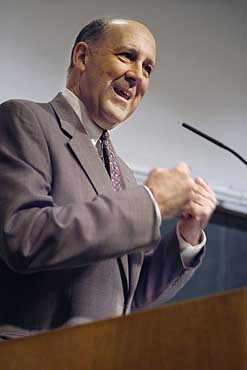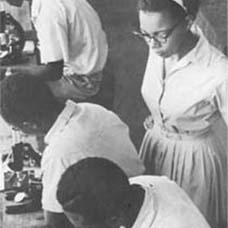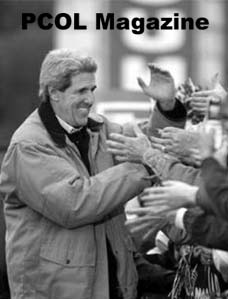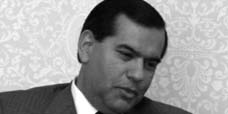
Governor Jim Doyle's proposal to build a $375 million interdisciplinary research center on the UW-Madison campus is characterized as a “response” to California, where voters passed a $3 billion, 10-year initiative to fund human embryonic stem cell research.
Doyle’s proposal is about more than keeping pace with California
Tom Still • Published 11/22/04
It was inevitable that Governor Jim Doyle's proposal to build a $375 million interdisciplinary research center on the UW-Madison campus would be characterized as a “response” to California, where voters passed a $3 billion, 10-year initiative to fund human embryonic stem cell research.
Make no mistake; stem cell research is a sizable part of what will happen inside the Wisconsin Institute for Discovery, which would be constructed in phases over 10 years. But it's not the only facet of this much-needed proposal—and, over the long run, it may not even be the most important.
Since the publication of “Vision 2020: A Model Wisconsin Economy” in late 2002, members of the Wisconsin Technology Council, among others, have insisted that the state's technology future rests with interdisciplinary research. That is research that combines a variety of scientific disciplines—biology and information technology, for example, or engineering, nanotechnology and biotechnology—to develop new products, medicines, systems and processes.
The call for interdisciplinary research was repeated in the Tech Council's October report on the economic value of academic research and development in Wisconsin, and it has been a part of virtually every technology development plan put forth by the UW-Madison, other UW System campuses and private research centers such as the Medical College of Wisconsin.
So it was not a tremendous surprise when Doyle, a leading advocate for R&D in Wisconsin, announced his intent to push for the creation of an interdisciplinary research center at UW-Madison—and to seek legislative approval for related initiatives to build upon the state's solid research foundation.
In addition to the Wisconsin Institute for Discovery, which would encompass research in stem cells, biochemistry, computer engineering and nanotechnology, the Doyle plan calls for the following:
The removal of bureaucratic hurdles for faculty members who want to become entrepreneurs;
Providing venture capital through the Department of Commerce to start-up businesses through legislation the Governor signed earlier this year;
A $134 million HealthStar Interdisciplinary Research Complex near the University of Wisconsin Hospital and Clinics dedicated to innovation and rapid transfer of medical science discoveries into clinical applications;
A $132 million research facility at the Medical College of Wisconsin and Children's Hospital that will focus on infectious disease control, cardiovascular illnesses, and bioengineering;
$1.5 million annually to support a new Alzheimer's research initiative;
Investments of $105 million over the next five years in research, education, and public health efforts at the University of Wisconsin Medical School and the Medical College of Wisconsin to make progress in areas such as regenerative medicine, stem cell research, molecular medicine, neuroscience, and cancer research.
The story was reported, somewhat naturally, as Wisconsin's “me-too” reaction to California's referendum. But that's truly not the case. Think about it: A proposal that includes about $750 million in private and public spending, and buildings with footprints that exceed 1 million square feet, wasn't dreamed up in the two weeks after Election Day. This proposal was in the works for months.
More accurately, it's the result of decades of work that has come before it. Wisconsin has invested in life science research as long as or longer than any state, with a 100-year tradition of investment in biology, chemistry, engineering, physics and more. The UW-Madison was a founding member of the national association of research universities. If not for that extensive public and private investment over time, breakthrough discoveries such as Dr. James Thomson's stem-cell findings in 1998 would not have been possible.
Stem cells are so-called “blank slate” cells that may have the ability to grow into replacement cells. More immediately, they will help researchers test treatments and drugs in conditions that more accurately reflect effects on humans.
Wisconsin discovered how to keep human embryonic stem cells alive in a state that allows continued research. While other states and nations are eager to catch up, the foundation for R&D that exists in Wisconsin will make allow the state to keep pace and even run ahead. Moreover, the interdisciplinary approach that runs through Doyle's plan means Wisconsin will likely announce many more discoveries over time.
-----
Still is president of the Wisconsin Technology Council and the Wisconsin Innovation Network. He is the former associate editor of the Wisconsin State Journal in Madison.
The opinions expressed herein or statements made in the above column are solely those of the author, & do not necessarily reflect the views of Wisconsin Technology Network, LLC. (WTN). WTN, LLC accepts no legal liability or responsibility for any claims made or opinions expressed herein.
See other articles by Tom Still.







